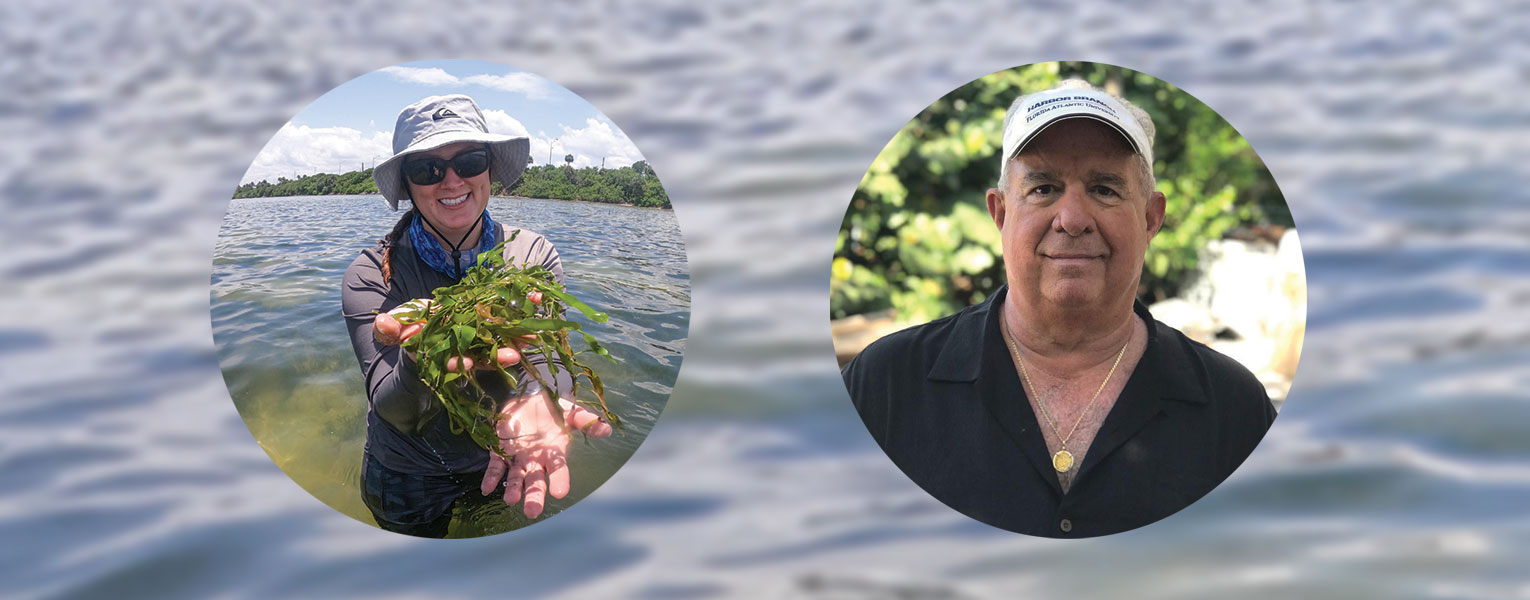7/8/2024
Florida Atlantic: Seagrass Loss
Green Macroalga Dominates the Indian River Lagoon
Florida’s Indian River Lagoon is in distress. The 156-mile-long estuary was considered one of the last “unpolluted coastal lagoons” back in the 1970s. Now, more than 50 years later, the lagoon is impaired because of nutrients from human waste, fertilizers, stormwater runoff, agriculture, rainfall and submarine groundwater discharge.
As a result of these external sources of nutrients, parts of the lagoon have experienced harmful algal blooms and catastrophic seagrass losses. It also is the epicenter of Florida manatee starvation and deaths.
To better understand factors related to seagrass losses in the Indian River Lagoon, researchers from Florida Atlantic University’s Harbor Branch Oceanographic Institute conducted a unique, long-term monitoring study that examined the cover of seagrass and macroalgae in the lagoon from 2011 to 2020 compared to factors such as nutrients and the chemical composition of macroalgae. Data from the study provide important insight into the drivers of change in the lagoon, which are necessary for managers seeking to mitigate habitat losses, facilitate recovery and improve resilience.
Results of the study, published in the journal Ecological Indicators, reveal that since the 2011 blue-green “super bloom,” benthic cover in large parts of the Northern Indian River Lagoon and Banana River has significantly changed from primarily the seagrass Halodule wrightii until 2015, to primarily the green macroalga Caulerpa prolifera after 2018. While native to the Indian River Lagoon, C. prolifera acts as an invasive species that can move into new spaces and dominate due to its competitive ability in impaired habitats. Though with the low seagrass cover, competition was likely not a factor in this replacement.
“The change in primary benthic cover from seagrass to green macroalgae has the potential to cause cascading ecological effects, both directly and indirectly,” said Brian Lapointe, Ph.D., research professor at FAU Harbor Branch. “Caulerpa prolifera produce a toxic bioactive chemical compound that is transformed into more toxic and deterrent oxytoxins and are not a suitable replacement for seagrass in manatee diets. The changing benthic cover in the lagoon also has profound effects on the survival of these important herbivores.”
The increase in C. prolifera was associated with four years of high ammonium concentrations and macroalgal nitrogen isotope values, linking the blooms with the influence of human waste. Ammonium is the predominant form of nitrogen in septic tank effluent that flows into groundwaters and ultimately the lagoon.
“Loss of seagrasses in urbanized estuaries is common, as they are highly susceptible to watershed nutrient and sediment inputs, making seagrasses effective biological sentinels,” said Rachel Brewton, Ph.D., research scientist at FAU Harbor Branch. “Reducing stormwater runoff and inputs of human waste and the associated nutrient load will help promote the recovery of seagrasses in the Indian River Lagoon. Importantly, our study findings have implications for urbanized estuaries experiencing seagrass losses globally.”
If you would like more information, please contact us at dorcommunications@fau.edu.

